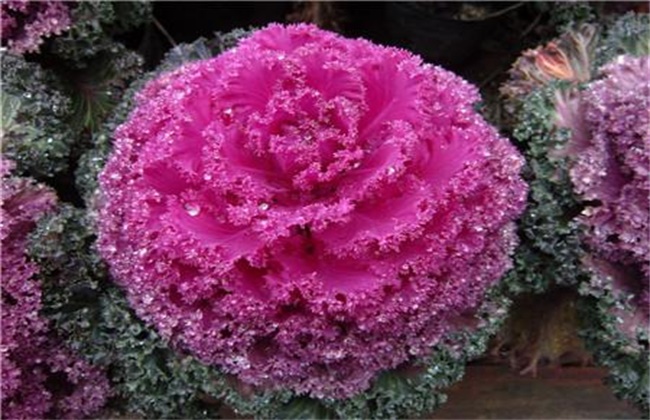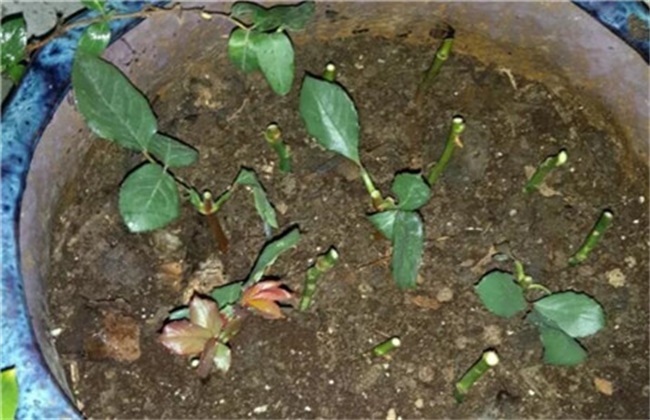How to raise Wandailan
Vanda orchid is a kind of flower plant belonging to Orchidaceae, which still has a large market demand in China. Vanda ornamental value is very high, as a potted plant and floral design by many people's favorite indoor decoration. Therefore, no matter whether it is planting base or potted planting, the breeding area of Vanda orchid in our country is still very large. So how exactly should Wandai orchid be raised? The following small series will give you a brief introduction. Let's take a look together!

1. Cultivation substrate
Vanda orchid roots are relatively robust and long, generally like to expose in the air. Therefore, when we cultivate Vanda orchid, the cultivation substrate should ensure good permeability. To charcoal, bricks, bark blocks and other preparation, and common culture soil, rotten leaf soil is not suitable for breeding Vanda. This point is that we must pay more attention to, a suitable cultivation substrate is the key to ensure the normal growth of Vanda. Will directly affect the flowering of Vanda orchid, substrate discomfort, then will reduce the ornamental Vanda orchid.
2. Reproductive methods
There are many propagation methods of Vanda, among which the common ones are ramet propagation and cuttage propagation. Vanda orchid growth rate is relatively fast, when the old Vanda orchid after giving birth to aerial roots, it can be divided into plants and propagation. Raiders generally propagate in spring when temperatures rise. Cut the aerial roots of the plants directly with a sharp knife, taking care not to hurt the roots. Then apply carbendazim to the wound to prevent infection. And then directly out of the plant clusters and then know the humidity and shade of the place, under normal management, that year can bloom. Cutting propagation is mainly stem cutting propagation.
3. Reasonable watering
When maintaining Vanda, we should do a good job of watering according to the changes of seasons. In spring and summer, because the temperature is relatively high. So water twice a day or so, and also appropriate water spray, improve humidity. After autumn, water once a day in the morning, and in winter can reduce the amount of watering, watering should also be carried out at noon when the temperature is higher, to avoid low temperature and high humidity caused by root rot. And in winter watering also pay attention to not to sprinkle water on the leaves. Because the leaves are easy to retain water, it is easy to cause the leaves to rot, resulting in defoliation and even death.
4. Scientific fertilization
Vanda orchid in the growth of fertilizer requirements are also relatively large. When the orchid is growing well, it should be wetted once a week, and special fertilizer for orchids can be used. It can be applied to the roots or the whole plant. In summer, it can be applied once a month. After the flowering period of Vanda, the withered flowers should be cut off to promote the vegetative growth of Vanda. If in the growth period, Vanda orchid nutrient absorption is insufficient, then it will significantly reduce growth, resulting in thin stems and leaves, easy to lodge. Winter because of the lower temperature, so can not topdressing.
The above is a brief introduction to how to raise Wandai Lan. Today's introduction is here, this article is for reference only, I hope to help everyone oh!
Related
- Fuxing push coffee new agricultural production and marketing class: lack of small-scale processing plants
- Jujube rice field leisure farm deep ploughing Yilan for five years to create a space for organic food and play
- Nongyu Farm-A trial of organic papaya for brave women with advanced technology
- Four points for attention in the prevention and control of diseases and insect pests of edible fungi
- How to add nutrient solution to Edible Fungi
- Is there any good way to control edible fungus mites?
- Open Inoculation Technology of Edible Fungi
- Is there any clever way to use fertilizer for edible fungus in winter?
- What agents are used to kill the pathogens of edible fungi in the mushroom shed?
- Rapid drying of Edible Fungi



